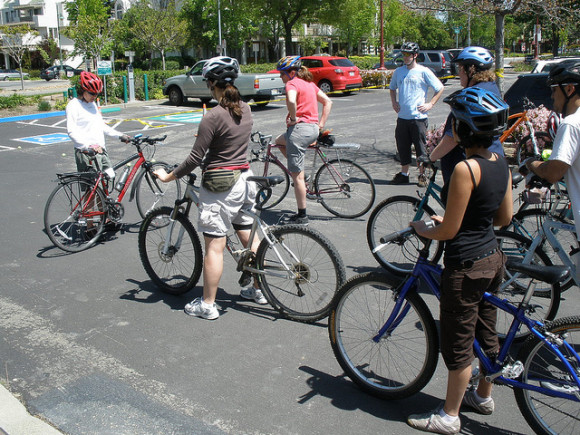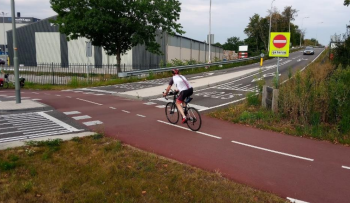
Helmet effectiveness research forced to go back to the drawing board
New research from Theo Zeegers in the Netherlands seems to have thrown the cat amongst the pigeons with regards to bicycle helmet research. A Dutch cycling researcher and advocate Theo Zeegers has put forward a piece of research that may force us to conclude that we now have very little real life case evidence for the effectiveness of the bicycle helmet in preventing head injuries.
Bicycle helmet research has had two main threads of research, time series studies and case-control studies. Time series research[1] documents the rise and fall of head injuries and non-head injuries just before, during and after the introduction of bicycle helmet legislation (in Australia in 1991 for example) or increased helmet usage. The conclusions of these studies seem to be that there is very limited or no benefits from the increased usage of helmets. Arm and leg injuries follow the same rate as head injuries telling us that helmets are probably not the cause of any fall in head injuries rather it is likely that safer infrastructure, drink-drive legislation, safer vehicles etc. are responsible. This of course does have complications in that it doesn't tell us for sure that an increase in helmet wearing itself may or may not be beneficial as the introduction of the law itself may have an effect on the behaviour cyclists populations.
Then we have case-control studies[2] which compare the number of helmeted and non-helmeted cyclists with a head injury during an accident, with the number of cyclists actually on the street with and without a helmet. If the number of head injured cyclists wearing a helmet (the case) is lower than the number of cyclists on the streets in general (the control) then it is claimed that the helmet is effective. However the number of cyclists on the streets that wear helmets is often not known and so the control group is often made up of a group of hospital patients with cycling injuries other than the head. This group then acts as the representative of the cyclist on the street (helmet wearing being more clearly known). However this group can only be truly representative if there is no correlation between helmet usage and the risk of getting a non-head injury.
Theo seems to have shown mathematically that this is in fact not the case and that the risk of getting a non-head injury is indeed correlated to helmet use. This then invalidates the use of this control group as a way of controlling for non-head injuries; which then in turn invalidates these case-control studies. This was then checked against three real world studies and an over-estimation did occur; in all three cases the risk of getting a non-head injury was higher than without, and in two getting a head injury was higher than without a helmet. This does not necessarily mean that wearing a helmet is more dangerous (though some risk compensation studies have also proposed this possibility) rather it is more likely that some helmet wearing ‘populations’ (racing cyclists for example) partake in riskier cycling and so are more prone to accidents[3].
In any case what Theo’s study has shown is that evidence for bicycle helmet effectiveness that is brought to us through case-control hospital studies is flawed. Given that much of bicycle helmet legislation is based on the evidence of such studies this would also mean that mandatory bicycle helmet policy and legislation is also flawed. I said that there were three threads to bicycle helmet research, but there is another interesting way to look at the effectiveness and that is to see this in the light of the benefits or costs to public health. When we deal with road safety we often think of Newtonian physics science, or heads hitting bonnets, of braking distances and forces in crashes and the effects on the human body. This is all well and good for many modes or transport, however it doesn’t really work for active mobility like cycling and walking.
Passive modes of transport all have costs when it comes to public health such as a sedentary lifestyle and road crashes, cycling on the other hand has costs in the form of crashes but also benefits in that it takes effort to move which has a positive effect on our health. What we do know is that the benefits outweigh the costs by around a whopping 20:1[4], once we factor this into the equation any reduction in cycling numbers brought about by helmet legislation, or indeed any road safety intervention, will almost invariably lead to a public health disbenefit. Piet de Jong[5] has calculated that even if bicycle helmets were 100% effective for all injuries in all crashes it would still only take a small reduction in cycling numbers to make bicycle helmets an ineffective public health measure. Theo’s paper will be appearing in a peer reviewed journal soon, we will keep you posted. Until then it is available here and here. Most bicycle helmet research can be found at this excellent website, often with critical reviews http://www.cyclehelmets.org
[1] http://injuryprevention.bmj.com/content/16/Suppl_1/A228.3.abstract http://www.sciencedirect.com/science/article/pii/S0001457500000737 http://www.sciencedirect.com/science/article/pii/0001457596000164 http://www.ncbi.nlm.nih.gov/pmc/articles/PMC1410838/ http://ecf.com/news/what-happens-when-you-mandate-helmet-wearing-among-young-swedish-cyclists/ [2] http://www.ncbi.nlm.nih.gov/pubmed/2716781 http://www.ncbi.nlm.nih.gov/pubmed/8971066 www.ncbi.nlm.nih.gov/pubmed/10796827 [3] http://www.cyclehelmets.org/1261.html [4] http://www.bmj.com/rapid-response/2011/10/31/health-benefits-utility-cycling-evidence-overlooked [5] http://papers.ssrn.com/sol3/papers.cfm?abstract_id=1368064
Regions:
News category:
Topics:
- Log in to post comments
Contact the author
Recent news!
Contact Us
Avenue des Arts, 7-8
Postal address: Rue de la Charité, 22
1210 Brussels, Belgium









